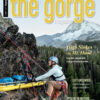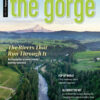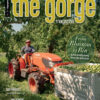Not long after I moved to Portland in the 1980s for college, one of the biggest stories of the decade happened. In May 1986, a group of students from Oregon Episcopal School — located a few miles from my dorm at Lewis & Clark College — got stranded in a storm while attempting to climb Mount Hood. My roommate had a small black-and-white TV and in those pre-internet days, we were glued to news coverage of the search.
Because of the storm, it took three days for search-and-rescue crews to locate a snow cave the stranded climbers had built. Ultimately, seven students and two staff members died in the tragedy. All told, searchers from alpine rescue groups all over Oregon and Washington logged nearly 6,000 hours on the mountain as the search unfolded. The Hood River Crag Rats was one of them.
Christopher Van Tilburg, a 25-year veteran of the Crag Rats, wasn’t part of the group at the time, but he’s been on hundreds of search-and-rescue missions on Mount Hood and in the Columbia Gorge over the past two and a half decades. He’s written a book about the Crag Rats, the nation’s oldest mountain rescue team, and the increasingly untenable situation on Mount Hood. In the years since the 1986 tragedy, there’s been a dramatic rise in the number of climbers on the mountain, and increasing risks as the climbing season gets pushed beyond its safest window. Physical changes brought about in part by climate change are also contributing to more dangerous conditions. Rescue season for the Crag Rats used to be spring and summer. Now, according to Van Tilburg, it’s nearly year-round. He wrote our cover story about Mount Hood, the Crag Rats and what’s happening on the mountain, starting on page 42.
If you’re a user of the Indian Creek Trail in Hood River, you may have noticed a new addition to the trail of late: poems. That’s right, metal signs inscribed with poems have been installed on two sections of the trail. The Indian Creek Poetry Walk is the work of Hood River resident Paul Woolery, who calls it a “gift for the community.” Indeed it is. You can read about it starting on page 50. And thank you, Paul.
Don’t miss our story by David Hanson about how Trump administration cuts to federal agencies and programs could affect public lands in and around the Gorge (page 36). Reductions to staff and resources may impact recreation areas during the busy summer season, and are likely to have longer-term consequences.
We hope you enjoy these stories and others in this issue, along with the beautiful images and also the ads by our loyal advertisers. They make this free magazine possible, and we encourage you to support them. Thanks for reading, and have a great summer!
— Janet Cook, Editor








